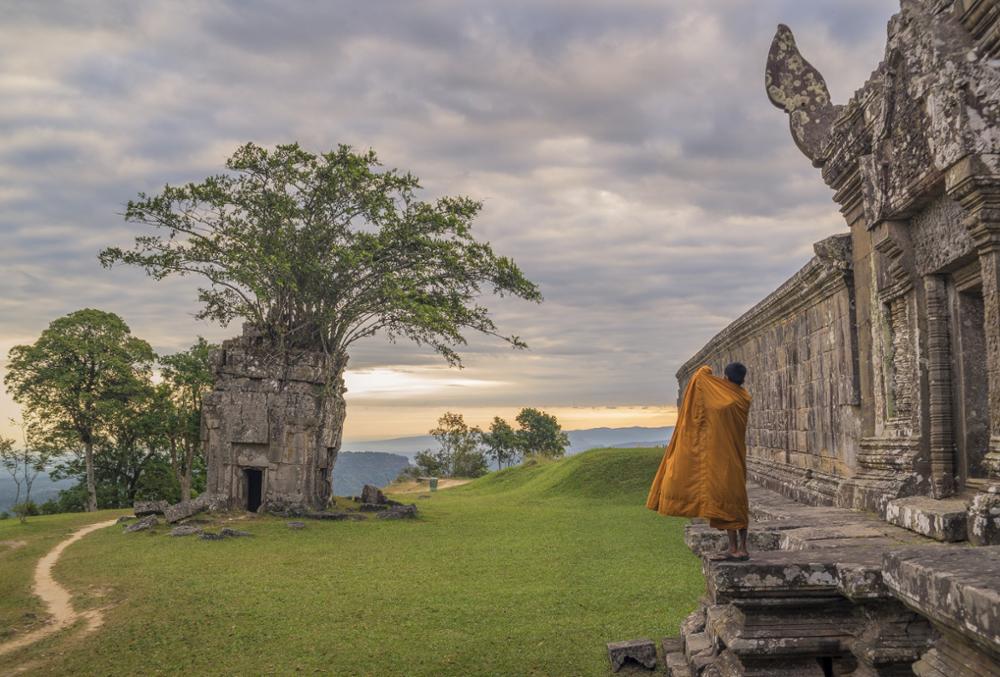
The 3 Cambodian sites inscribed on the UNESCO World Heritage List
Cambodia, renowned for its rich traditions and ancestral monuments, has been a member of UNESCO, the United Nations specialized agency for education, culture, and science, since its acceptance in 1991. Since then, the Kingdom has aimed to present many of its architectural monuments and historical sites for inclusion on the prestigious World Heritage List, with the glorious archaeological site of Angkor at the forefront. To date, only three entities have been inscribed, one per decade: Angkor in 1992, Preah Vihear in 2008, and Sambor Prei Kuk in 2017.
These three sites, visited repeatedly for several decades, were part of a broader list submitted to UNESCO by Cambodia, which also included eight other notable locations spanning material, cultural, and natural heritage.
These sites are :
- Koh Ker
- Kulen
- Angkor Borei and Phnom Da
- Oudong
- Beng Mealea
- Preah Khan
- Banteay Chhmar
- Banteay Prei Nokor
These eight sites have yet to be officially recognized by UNESCO on the World Heritage List since 1992, and as such, cannot currently be considered part of it. This article focuses on the three sites listed by the specialized agency, which, as a result, benefit from more advanced preservation and restoration programs.
The Angkor Archaeological site
As the most emblematic location of Cambodian culture, the Angkor site, with its mountain-temples such as Angkor Wat and Phnom Bakheng, was the first to be recognized by UNESCO in 1992. Situated just a few kilometers from Siem Reap, it covers a forested area of over 400 square kilometers and houses the remnants of the Khmer Empire. This was a golden era in the development of Khmer civilization, lasting 600 years between the 9th and 15th centuries, largely due to the construction of hydraulic systems and vast water reservoirs known as baray, which allowed for the storage and containment of water during the heavy monsoon seasons. These systems are still utilized today by many villages within Angkor, an area where rice cultivation is predominant.

UNESCO, in collaboration with the APSARA National Authority and CIC-Angkor, works tirelessly to conserve Angkor. However, the site faces significant pressures, notably from the 100,000 inhabitants living within its boundaries who are naturally seeking to expand their living space, as well as from the proximity to Siem Reap, a hub for mass tourism in Cambodia. These three organizations successfully removed Angkor from the World Heritage in Danger list in 2004.
Preah Vihear Temple
The Preah Vihear site has been the focal point of intense geopolitical tensions between Cambodia and Thailand for half a century. Located on the border between the two neighboring countries, the site was the scene of territorial disputes since Cambodia’s independence in 1953, the year when the Thai army occupied the temple. After many conflicts, and 55 years later, both countries recognized the universal and exceptional cultural value of Preah Vihear. They agreed to present the site to the World Heritage Committee in 2008 in Quebec, with Thailand's support. UNESCO decided to inscribe it as a World Heritage site due to its history and the fact that it represents a masterpiece of Khmer architecture.

The natural setting of this series of sanctuaries and religious buildings, linked by an 800-meter long road, greatly contributed to its selection. Perched atop a plateau in Preah Vihear province, it offers a remarkable view of the surrounding rural landscapes.
Sambor Prei Kuk site
Known in Khmer as "the temple in the lush forest," Sambor Prei Kuk, built at the beginning of the 7th century, represents the genesis of pre-Angkorian architecture, which was later widely used at Angkor. The site, then called Ishanapura, was the capital of the Chenla Empire, which ruled Southeast Asia before the Khmer Empire, from the 6th to the 9th century. The lintels and pediments, commonly used during the Angkor period, are regarded by UNESCO as true masterpieces. The architecture of the site laid the foundation for the distinctive Khmer style that would later dominate Southeast Asia.
In 2017, the site was the latest to be recognized by UNESCO as a World Heritage site in Cambodia, while the eight other locations remain on the indicative list, awaiting recognition.
